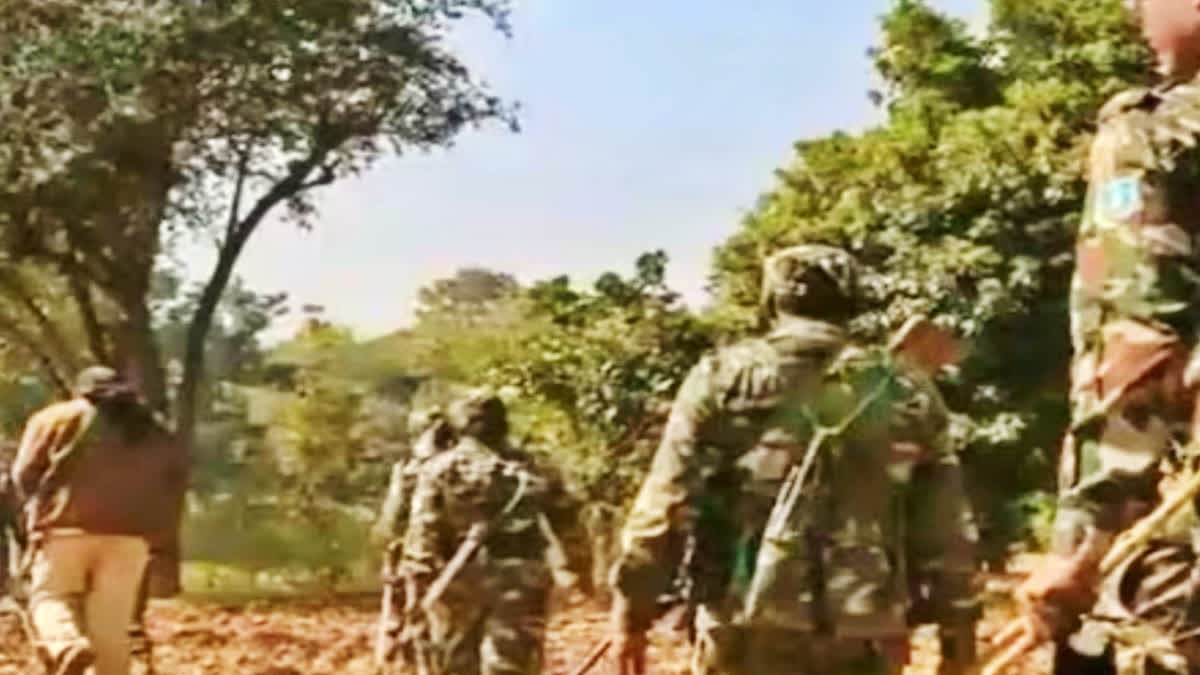Hyderabad (Telangana): As the Maoists hit back at the security forces at Dantewada district in Chhattisgarh killing 11 security personnel, it might be a reminder to one of the deadliest attacks in the history of Maoists uprising in India. Nearly 13 years back the ultras had gunned down 76 security personnel proclaiming an unconditional and long-term war against the union government of India. The attack came a few months after the Congress led UPA government launched ‘Operation Green Hunt’– an anti-Maoists operation to weed out the extremists from atleast seven states of the country. After more than a decade, when the central government claims to have been successful in neutralising the ultra-left extremists, the attack in Dantewada on Wednesday again might be a herald to more bloodshed and intense struggle in the coming days.
On April 6, 2010, Maoist rebels carried out their deadliest attack yet on security forces in India. In the attack, 74 members of the Central Reserve Police Force (CRPF) and two policemen from the Chhattisgarh police were killed, and an Armoured Personnel Carrier (APC) was destroyed near Chintalnar village in Dantewada district, Chhattisgarh. Among those killed were a Deputy and an Assistant Commandant of the CRPF, and a head constable of the district police.
The attack took place in the Mukrana forest, about 540 km southeast of the State capital Raipur. Over 85 officers from the central paramilitary force Central Reserve Police Force (CRPF) and a local police group were conducting an area domination exercise in the Bastar tribal region of the Indian state of Chhattisgarh when the ambush occurred at about 5.30 AM. An army battalion, along with between 30 and 40 men from the Chhattisgarh police, were returning from the area domination exercise when the attack occurred.
According to police reports, 300 Naxal fighters initially attacked a convoy of the paramilitary Central Reserve Police Force (CRPF) in the Talmetla area as they were returning from an operation. The Naxals were hiding when the 74th Battalion of the CRPF reached Kalapathar near Chintagufa in Sukma. Seven injured personnel were evacuated by helicopter to the Maharani Hospital in Jagdalpur.
The attack was condemned by the then Home Minister of India P Chidambaram, who stated that it showed the "savage nature" of the Maoists. According to a report by The Hindu, Kosa, Leader of the Dandakaranya Special Zonal Committee of the CPI Maoist, was executed by three Maoist companies led by Ganeshanna and Ramanna, two top leaders from the same Committee.
The Maoist leader Gopal stated that the attack was conducted as a "direct consequence" to the government's Operation Green Hunt. Operation Green Hunt is the name used by the Indian media to describe the "all-out offensive by paramilitary forces and the forces of the state" against the Naxalites. The operation is believed to have begun in November 2009 in five states in the "Red Corridor." The term was coined by the Chhattisgarh police officials to describe one successful drive against the Communist Party of India (Maoist) in the state.
The attack was a stark reminder of the ongoing conflict between the Indian government and the Maoist rebels. The Naxalites, as they are commonly known, have been active in India for decades and are believed to have a significant presence in several states in the country. The Maoists seek to overthrow the Indian government and establish a socialist state. The government, in turn, has launched several offensives against the Naxalites, resulting in a long and bloody conflict that shows no signs of abating. The attack on the security forces in 2010 was a tragic reminder of the toll that this conflict has taken on both sides.



